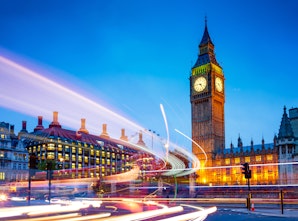
Soaring gas prices in 2022 saw the British administration pouring taxpayer cash into tackling energy poverty, paying half of a typical household’s winter electricity bills. It was against this backdrop that the government launched a strategy paper called Powering up Britain in March 2023.
The 30-page document was produced in response to a High Court order demanding greater clarity of the UK’s net-zero plans. It aims to provide a blueprint for the future of energy in the country, wrote Grant Shapps, Secretary of State for Energy Security and Net Zero, in a ministerial forward.
It aimed to answer questions such as how to secure the reliable, affordable energy needed to power Britain, how to transition from the polluting sources of generation destroying our planet and how to make sure families cannot be held hostage by nations using fuel as a tool of aggression, he said.
But will the strategy achieve these aims? It certainly includes some bold moves, such as a plan to have 24 GW of nuclear energy up and running by 2050.
Nuclear is a potentially valuable addition to the low-carbon generation mix, but recent new reactor projects in Europe have been dogged by cost and schedule over-runs, making this a high-risk bet by the government.

Another is “a world-leading commitment to carbon capture, usage and storage,” or CCUS. Most decarbonisation pathways now foresee an important role for CCUS because we are almost certain to overshoot our global carbon budget for 1.5ºC warming.
But the technology is immature, with a sketchy track record, and its ability to scale is unproven. With these caveats out of the way, there is also a lot to commend in Powering up Britain.
Here are the points where we think the strategy gets it right:
- Delivering a hydrogen economy. The paper says the UK should have enough low-carbon hydrogen to power London for a year by 2030. Replacing fossil fuels across a range of hard-to-abate industries, the need for hydrogen is clear, and it is great to see the UK moving forward with procurement.
- Accelerating the deployment of renewables. The government says it wants 50 GW of offshore wind by 2030 and five times the current level of solar power by 2035. Solar, particularly, is one of the lowest-cost sources of generation on the planet and can be installed almost anywhere.
- Reducing reliance on fossil fuels for heating. This should be a no-brainer given the impact of high fuel prices on household (and government) finances in 2022. It is also encouraging that the paper envisages a switch to heat pumps rather than hydrogen-gas blends, which burn valuable hydrogen.
- Reducing household bills by increasing energy efficiency. This is a great ambition that the government claims could reduce power demand by 15% come 2030. However, previous plans have faltered and getting people to invest in energy efficiency is easier said than done.
- Decarbonising transport. The UK has a goal of phasing out internal combustion engine vehicles by 2030 and is now aiming to lead the charge towards low-emissions aviation and shipping, which dovetails with plans to foster low-carbon hydrogen.
- Speeding up planning and networks. If achieved, this could be one of the most transformative parts of the Powering up Britain plan. Much of the current challenges around the energy transition relate to permitting and consenting rather than the development of renewable generation assets.

Powering up Britain also rightly identifies the need to mobilise private investment, recognising the energy transition as a business growth opportunity, not a cost. This is something we also strongly believe at Pacific Green.
“Investment is the key to delivering our energy security, carbon targets and seizing the economic benefits—the jobs, exports and productivity gains—of the transition,” says the paper.
“We need investment at scale across a range of sectors to rapidly roll out existing technologies and bring through transformative new ones. Established technologies, such as offshore wind turbines, need to be deployed at pace to meet our ambitions for decarbonising power.”
We couldn’t agree more with this sentiment. However, there are a few things that we also think are missing from the Powering up Britain strategy. First among these is energy storage, which does not get a single mention.
Battery storage will be key to the UK’s clean energy ambitions, and although it is uniquely placed to stand on its own feet, finance-wise—with current projects able to tap into a range of lucrative revenue streams—its complete omission from the paper seems unusual.
More widely, Powering up Britain also has nothing to say about flexibility. This is the ability of the grid to actively respond to shifts in available generation and is seen as key to the operation of low-carbon electricity systems.
Flexibility can be achieved by demand response—effectively, asking businesses and consumers to turn things off when there is not enough energy to go around—and through storage assets such as electric vehicle and grid-scale batteries, among other options.
As well as these points, much has been made of the fact that Powering up Britain fails to explicitly support onshore wind, which is the cheapest form of renewable generation in the UK.
“Government has consulted on changes to planning policy in England for onshore wind to deliver a localist approach that provides local authorities more flexibility to respond to the views of their local communities,” is all the paper said. “We will respond to the consultation in due course.”
The UK Association for Renewable Energy and Clean Technology also lamented “significant gaps” in Powering up Britain.
“Chief amongst these is accelerating UK attractiveness in globally competitive investment markets and ensuring that renewables are treated on a level playing field with oil and gas investment,” it said.
In summary, the UK strategy contains much that is commendable, but—as is often the case with net-zero plans—could go further. It will allow the UK to continue claiming to be a leader on climate action, but the country will need even greater ambition if it is to reach its goals.
Publish date: 15 May, 2023